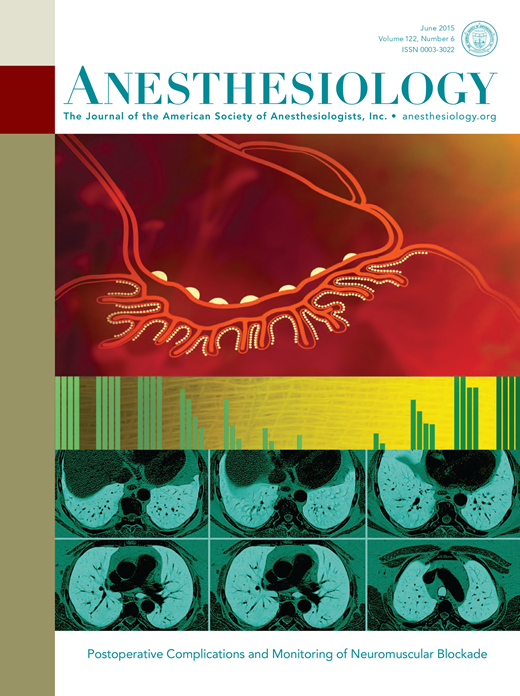Oxygen supplementation in pediatric sedation-prospective, multicenter, randomized controlled trial.
IF 9.1
1区 医学
Q1 ANESTHESIOLOGY
引用次数: 0
Abstract
BACKGROUND Children undergoing moderate to deep sedation for diagnostic and therapeutic procedures are susceptible to hypoxemia because of their anatomical and physiological features. However, optimal oxygen administration methods are unclear. This study aimed to evaluate the efficacy of oxygen supplementation during sedation using either low-flow or high-flow nasal cannula (HFNC). METHODS This prospective, multicenter randomized controlled trial included children (<18 years) undergoing moderate to deep sedation. The participants were randomly assigned to three groups as follows: (1) control (no oxygen), (2) low-flow (LF) (2-6 L/min oxygen via nasal cannula), and (3) high-flow (HF) (oxygen administration via HFNC with a flow rate of 2 L/kg and 50% fraction of inspired oxygen). The primary outcome was hypoxemia incidence (saturation of peripheral oxygen, SpO2 ≤95% for more than 5 s). Secondary outcomes included SpO2 <90%, rescue interventions, and sedation-related complications. Between-group differences were compared using a logistic regression model. RESULTS A total of 253 participants were randomized, with 250 completing the study. Hypoxemia occurred in 27.6% of participants in the Control group, 7.2% in the LF group, and 1.2% in the HF group (p<0.001). The odds of hypoxemia in the LF and HF groups were lower than that in the Control group [odds ratio, OR=0.184 (95% CI, 0.067 - 0.503), p=0.001 for LF; OR=0.026 (95% CI, 0.003 - 0.207), p<0.001 for HF]. However, hypoxemia incidence of the HF group was not statistically lower than the LF group (OR 0.143 (95% CI, 0.017- 1.245), p=0.078). Rescue interventions were conducted more frequently in the Control group (52.9%) than in the LF (10.8%) and HF (3.6%) groups (p<0.001). Sedation-related complications such as desaturation and apnea were lower in the LF and HF groups than in the Control group (p<0.001). CONCLUSION Routine oxygen supplementation prevents hypoxemia during pediatric moderate and deep sedation. Low-flow oxygen can be a reasonable choice as it effectively reduces hypoxemia while being more cost-effective and widely accessible than high-flow oxygen.补充氧气在小儿镇静中的应用——前瞻性、多中心、随机对照试验。
背景:在诊断和治疗过程中接受中度至深度镇静的儿童由于其解剖和生理特征而容易发生低氧血症。然而,最佳给氧方法尚不清楚。本研究旨在评估低流量或高流量鼻插管(HFNC)在镇静期间补充氧气的效果。方法:这项前瞻性、多中心随机对照试验纳入了接受中度至深度镇静治疗的儿童(<18岁)。参与者被随机分为三组:(1)对照组(无氧),(2)低流量(LF) (2-6 L/min通过鼻插管供氧),(3)高流量(HF)(通过HFNC供氧,流量为2 L/kg,吸入氧气的50%)。主要结局是低氧血症发生率(外周氧饱和度,SpO2≤95%持续时间超过5 s)。次要结局包括SpO2 <90%、抢救干预和镇静相关并发症。采用logistic回归模型比较组间差异。结果共纳入253例受试者,其中250例完成研究。对照组低氧血症发生率为27.6%,LF组为7.2%,HF组为1.2% (p<0.001)。低氧血症在LF组和HF组的发生率均低于对照组[比值比,OR=0.184 (95% CI, 0.067 ~ 0.503), LF组p=0.001;OR=0.026 (95% CI, 0.003 - 0.207), HF组p<0.001。但HF组低氧血症发生率与LF组比较差异无统计学意义(OR 0.143 (95% CI, 0.017 ~ 1.245), p=0.078)。对照组(52.9%)抢救干预的频率高于LF组(10.8%)和HF组(3.6%)(p<0.001)。LF组和HF组镇静相关并发症如去饱和和呼吸暂停均低于对照组(p<0.001)。结论:常规补氧可预防小儿中深度镇静时低氧血症的发生。低流量氧气是一个合理的选择,因为它可以有效地减少低氧血症,同时比高流量氧气更具成本效益和更容易获得。
本文章由计算机程序翻译,如有差异,请以英文原文为准。
求助全文
约1分钟内获得全文
求助全文
来源期刊

Anesthesiology
医学-麻醉学
CiteScore
10.40
自引率
5.70%
发文量
542
审稿时长
3-6 weeks
期刊介绍:
With its establishment in 1940, Anesthesiology has emerged as a prominent leader in the field of anesthesiology, encompassing perioperative, critical care, and pain medicine. As the esteemed journal of the American Society of Anesthesiologists, Anesthesiology operates independently with full editorial freedom. Its distinguished Editorial Board, comprising renowned professionals from across the globe, drives the advancement of the specialty by presenting innovative research through immediate open access to select articles and granting free access to all published articles after a six-month period. Furthermore, Anesthesiology actively promotes groundbreaking studies through an influential press release program. The journal's unwavering commitment lies in the dissemination of exemplary work that enhances clinical practice and revolutionizes the practice of medicine within our discipline.
 求助内容:
求助内容: 应助结果提醒方式:
应助结果提醒方式:


